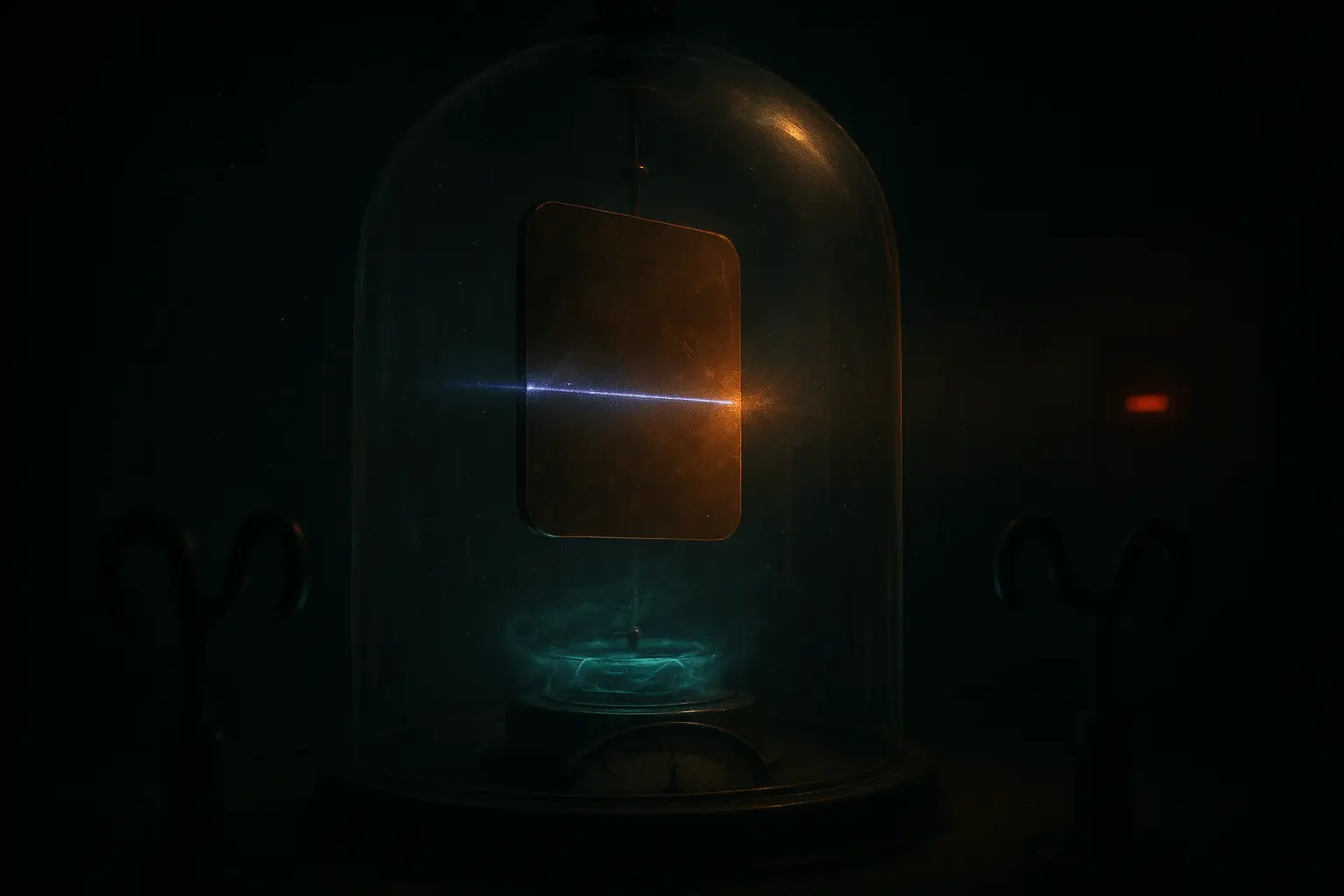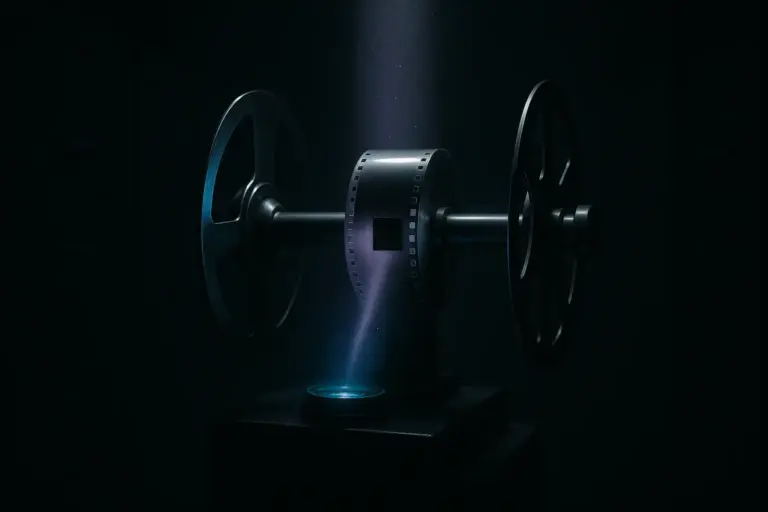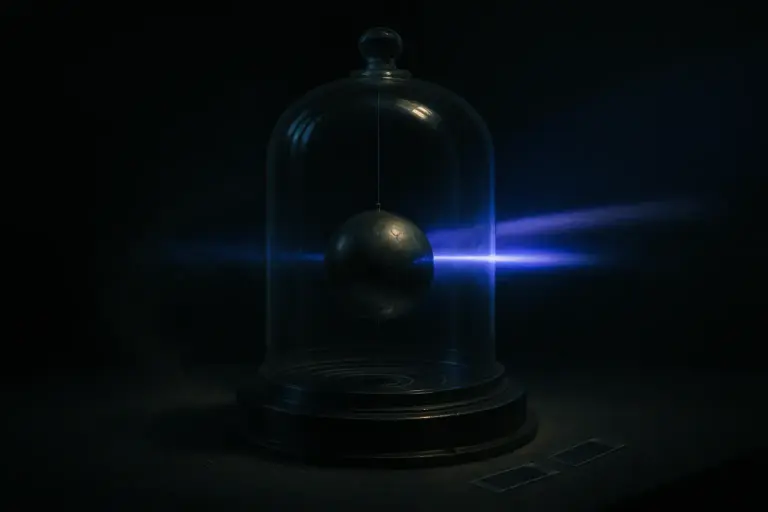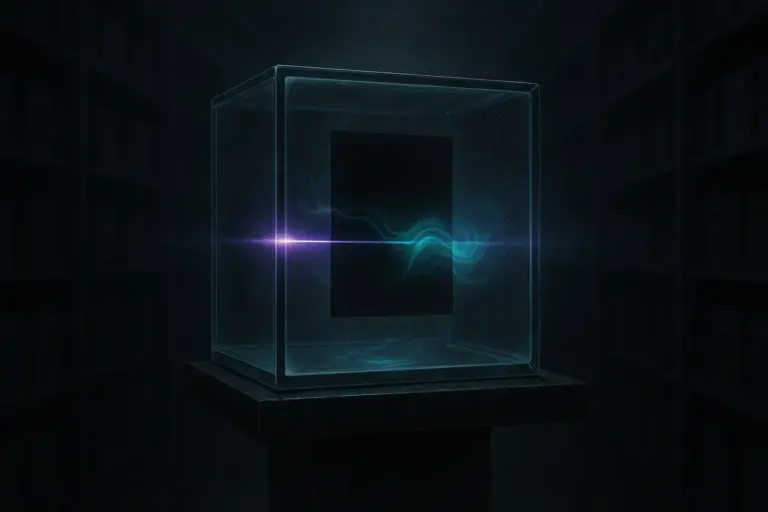Free Energy: An Analysis of the Science and the Suppression Claims
Patent archives show radiant capture, a detail lost to myth, where the pursuit of free energy always collides with the immutable second law of thermodynamics.
The copper plate is smudged with carbon and fingerprints, a coil faintly humming beside a ledger that tallies watts like a courtroom clerk. The brochure promised a device that pays for itself forever; the measurements on the page count heat lost to resistance and charge leaked to air. In this room the numbers don’t chant miracles. They whisper about sources and sinks. The term free energy carries a shine in sales pitch, but here the ink records a cost in every line. Something was edited in the story before it reached the public. The pages that remain disagree with the posters that survived.
What the Video Adds (Quick Summary)
- Tesla’s 1901 radiant energy patent described a collector apparatus, not a perpetual motion machine
- Gibbs free energy establishes thermodynamic limits that constrain all energy conversion systems
- The 1951 Invention Secrecy Act enabled classification of patents touching national security concerns
- Patent offices in the US and Australia require working demonstrations for perpetual motion claims
- Ambient energy harvesting devices operate within thermodynamic law by tapping environmental gradients

Tesla Patents Show Radiant Capture Not Free Energy Creation
When people invoke Nikola Tesla as patron saint of limitless power, they often skip the text that bears his name. The records show apparatus for collecting ambient or radiated charge and for transmitting power without wires, not machines that create energy from nothing. In 1901 he described a metal-plate and capacitor system intended to accumulate electrical energy from environmental gradients and radiation, an energy harvesting idea aligned with physical inputs rather than an over unity loop (Source: USPTO via Google Patents, 1901-11-05, US685957A radiant energy apparatus). Years later, his filings on high frequency transmission outlined how to move existing power through the earth and air as a medium, an engineering vision for forbidden science distribution rather than creation (Source: Tesla Universe archive, 1914-12-01, US1119732 energy transmission).
What Tesla Documented
The patents describe capacitors, elevated conductors, tuned circuits, and earth return paths. They aim to gather or send energy present in the environment or supplied at a station. The language is technical and bounded by inputs.
What Culture Inferred
Popular retellings transformed transmission into creation. The leap from distribution to generation without fuel appears in anecdotes, not in the applications, diagrams, or claims sections that decide scope.
Thermodynamics Defines Free Energy as a Function Not a Promise
In physics, free energy is not a fountain; it is a state function tied to temperature, entropy, and usable work. Archives show two formal quantities: Gibbs free energy for constant pressure processes and Helmholtz free energy for constant volume systems. Both describe limits on extractable work and obey the second law of thermodynamics, which forbids a device from delivering more energy than it receives when all inputs and losses are counted (Source: Encyclopaedia Britannica, 2025-10-11, free energy definition).
Claims of over unity output collide with conservation of energy; data suggest measurement errors, unaccounted inputs, or stored energy masquerading as generation. The paperwork that survives the lab normally shows heat, friction, electromagnetic leakage, and chemical depletion balancing the ledger, not a surplus drafted from nowhere. Investigations into suppressed technology files reveal similar patterns where thermodynamic constraints remain immutable.
“The margin note was smeared as if by a hurried thumb.”
Patent Examiners Demand Working Models Against Perpetual Motion
Patent offices learned to triage extraordinary power claims a century ago. Records indicate that examiners can demand a working model when a specification appears to defy established physics; perpetual motion assertions are routed to scrutiny where the burden rests on demonstration, not prose (Source: IPWatchdog, 2011-10-11, perpetual motion patent law). Outside the United States, similar logic applies; an Australian case shows rejection where evidence failed to establish credible utility beyond rhetoric, with analysis detailing the gap between assertion and reproducible performance (Source: Patentology, 2015-09-13, AU rejection case study).
Silencing narratives thrive where money and ambition met resistance. Wardenclyffe collapsed under financial strain and shifting investor priorities long before any global broadcast of power; archives summarize staffing cuts, mortgage defaults, and dismantling, a sequence compatible with economics rather than a sealed vault of proof (Source: Wikipedia, n.d., Wardenclyffe Tower history). Allegations of suppression exist in culture, but documentary trails that would show targeted denial beyond routine patent standards and funding pressures remain thin compared to the volume of retellings. The intersection with documented cases of secrecy orders and energy patents adds complexity but no conclusive proof of global conspiracy.
“One file was missing — the one that mattered.”
Ambient Harvesting Respects Physics While Myths Ignore Limits
There is a difference between tapping ambient fields and inventing power ex nihilo. Rectennas convert radio frequency power to DC, photovoltaics convert light, piezoelectrics capture vibration; these are lawful energy harvesting practices, not loopholes in the second law. The phrase free energy in engineering contexts refers to potential available to do work within constraints, not a device that outruns its own inputs.
What remains unknown belongs to the archive, not to prophecy. If gaps exist, they likely sit in agency files that could be queried — Department of Energy correspondence on unconventional generation, or National Archives holdings on early twentieth century electrical projects — but until such documents surface, the stronger record shows conservation and loss, not exception. Measured inquiry continues to be the shortest path between rumor and reality.
Sources Unsealed
Tesla’s 1901 filing on radiant capture sets the technical frame as collection of environmental charge under specific conditions (Source: USPTO via Google Patents, 1901-11-05, US685957A radiant energy apparatus).
His later transmission patent details tuned circuits and earth coupling for wireless distribution, not over unity generation (Source: Tesla Universe archive, 1914-12-01, US1119732 energy transmission).
Thermodynamics definitions of Gibbs and Helmholtz free energy anchor the scientific limits that devices must respect in practice (Source: Encyclopaedia Britannica, 2025-10-11, free energy definition).
Patent office treatment of perpetual motion claims demonstrates institutional gatekeeping standards across jurisdictions (Source: IPWatchdog, 2011-10-11, perpetual motion patent law).
Final Transmission
Under near black the coil cools and the violet trace on the scope exhales to baseline.
Ledger closed we step back into the corridor where claims meet constraints and the phrase free energy returns to its lawful place in physics.
Home stays lit in the corner while Forbidden Science and Suppressed Technology wait like labeled drawers.
Signal ends — clarity remains.
FAQ Decoded
What does free energy mean in physics versus over unity devices
In physics free energy refers to Gibbs and Helmholtz functions that quantify the maximum useful work available under specific thermodynamic conditions. It does not authorize machines that output more than their inputs once all losses are counted. Source: Encyclopaedia Britannica, 2025-10-11, britannica.com/science/free-energy
Did Nikola Tesla invent a free energy device and what do his patents show
His patents document energy transmission systems and the collection of ambient charge using elevated conductors and capacitors. They do not claim creation of energy without environmental input and focus on distribution methods rather than over unity generation. Source: Tesla Universe archive, 1914-12-01, teslauniverse.com/nikola-tesla/patents/us-patent-1119732-apparatus-transmitting-electrical-energy
How do patent offices evaluate free energy claims and what remains unproven
Examiners may require working models when claims defy established physics and will reject applications lacking credible evidence of reproducible utility. What remains unproven are broad suppression allegations that lack documentary confirmation beyond routine financial and technical constraints. Source: IPWatchdog, 2011-10-11, ipwatchdog.com/2011/10/11/the-patent-law-of-perpetual-motion/
They Don’t Want You to Know This
Join the society of the curious. Get early access to leaked findings, hidden knowledge, and suppressed discoveries — straight to your inbox, before they vanish.




